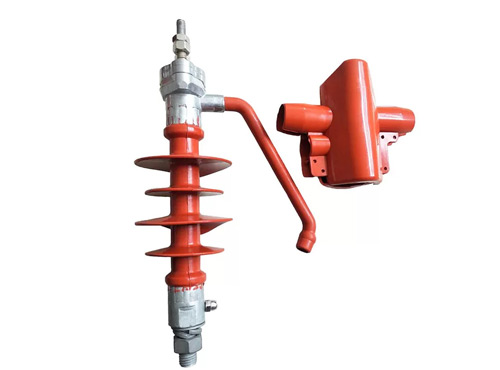
Composite Cross Arm Insulator
Composite cross arm insulators, also known as crossarm or pin insulators, are essential components used in electrical power distribution and transmission systems to support and insulate conductors (usually overhead power lines) from the supporting structures, such as wooden or metal crossarms, poles, or towers.
- DESCRIPTION
- SPECIFICATION
- TECHNICAL & SALES SUPPORT
Composite Cross Arm Insulator Description:
Composite cross arm insulators, also known as crossarm or pin insulators, are essential components used in electrical power distribution and transmission systems to support and insulate conductors (usually overhead power lines) from the supporting structures, such as wooden or metal crossarms, poles, or towers.these insulators play a crucial role in ensuring the safe and reliable operation of the electrical grid by preventing electrical current from flowing to the supporting structure and causing short circuits or other faults.
Composite Cross Arm Insulator Feature:
- One end fitting with holes can be fixed onto the electrical poles, replace the traditional crossarm, save cost.
- One end fitting with grooves can fix conductor onto the crossarm high voltage insulator, which replace traditonal pin insulators.
- Cross arm insulators comprise both advantage of steel cross arm and insulators, save one cost on steel and to save great money on the whole structure.
- Composite cross arm insulator also has advantage of high anti-pollution quality because of the silicone rubber characters.
Composite Cross Arm Insulator Advantages:
- 1) Weight Reduction: They are significantly lighter than traditional cross-arms, reducing the load on poles and towers.
- 2) High Mechanical Strength: Designed to withstand high loads, they contribute to the overall stability of the power line.
- 3) Corrosion Resistance: Unlike metal, composites do not corrode, which extends their lifespan and reduces maintenance.
- 4) Electrical Performance: They have excellent insulation properties and are resistant to electrical tracking.
- 5) Ease of Installation: Their lightweight nature simplifies transportation and installation processes.
Composite Cross Arm Insulator Spec
| Spec&Type | System voltage | Rated bending load | Structure height (mm) | Min arc distance(mm) | Minnominal creepage distance | Full wave lightning impulse withstand voltage (kV) | 1min power frequency wet withstand voltage |
| FS-10/5 | 10 | 5 | 270 | 168 | 320 | 75 | 42 |
| FS-10/4 | 10 | 4 | 350 | 248 | 470 | 145 | 60 |
| FSW-20/8 | 20 | 8 | 485 | 380 | 680 | 170 | 70 |
| FS-35/5 | 35 | 5 | 620 | 490 | 1200 | 265 | 100 |
| FSW-35/5D | 35 | 5 | 590 | 476 | 1150 | 230 | 95 |
| FSW-35/10 | 35 | 10 | 620 | 480 | 1260 | 230 | 95 |
| FSW-66/8 | 66 | 8 | 800 | 663 | 1800 | 410 | 185 |
| FSW-66/12.5 | 66 | 12.5 | 830 | 621 | 2100 | 410 | 185 |
| FSW-110/10 | 110 | 10 | 1294 | 1092 | 3930 | 550 | 230 |
| FSW-110/5 | 110 | 5 | 1270 | 1050 | 3150 | 550 | 230 |
Get More Product Solutions Engineer Service
TECHNICAL & SALES SUPPORT
If you have any questions, please contact us. We’ll do our best to help.



